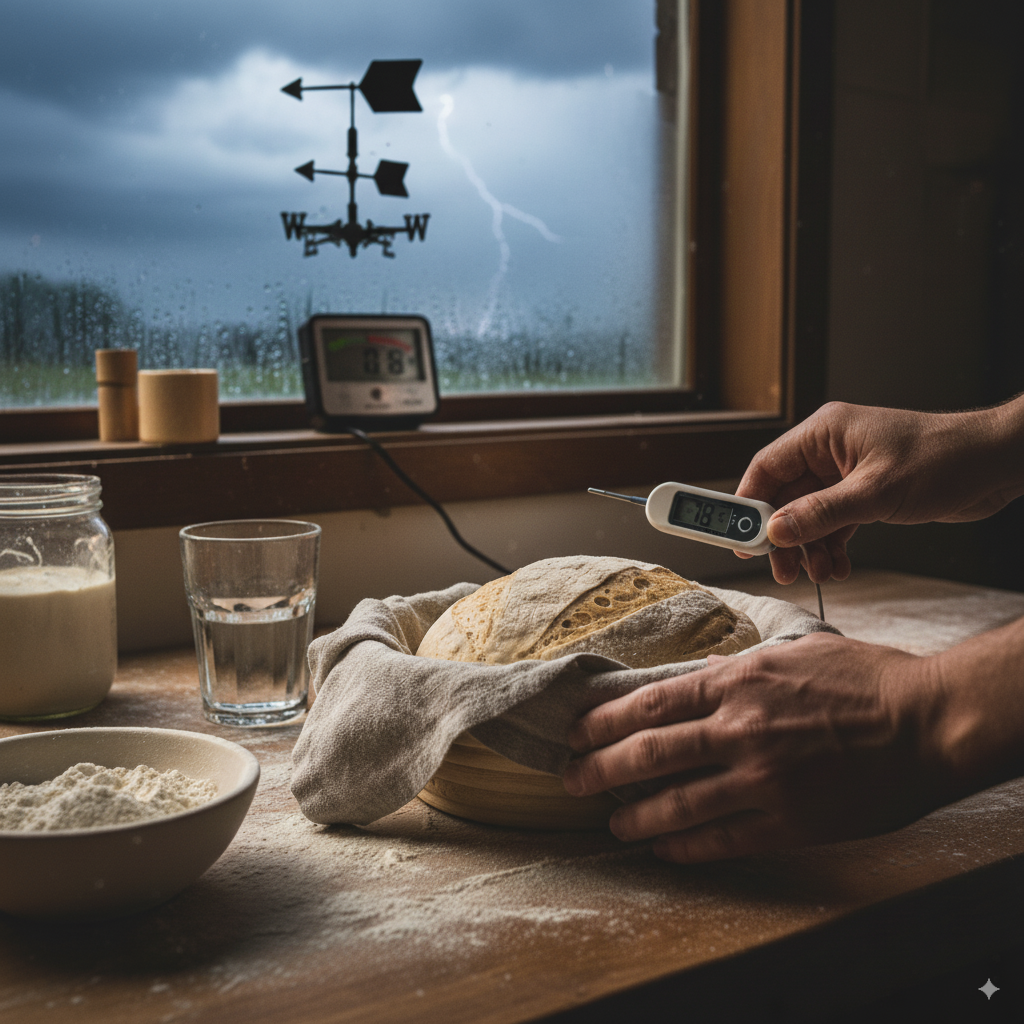For avid bakers, especially those intrigued by the rustic charm of sourdough, understanding the influence of weather conditions on baking can be as crucial as any ingredient. Sourdough, with its delicate balance of wild yeast and bacteria, is particularly sensitive to changes in temperature, humidity, and barometric pressure. Let’s learn how these elements affect the sourdough baking process and how you can adapt to ensure the perfect loaf every time:
Temperature: The Catalyst for Yeast Activity
Temperature plays a pivotal role in the fermentation process of sourdough. The activity of yeast and bacteria in the sourdough starter is highly temperature-dependent. Optimal fermentation occurs between 75°F and 80°F (24°C and 27°C). At these temperatures, the yeast thrives, producing enough gas and acids to make the dough rise adequately and develop a desirable flavor.
High temperatures can accelerate the fermentation process, causing the dough to rise too quickly, which might lead to a bread with less complex flavors. Conversely, low temperatures slow down yeast activity, which can be used to bakers’ advantage for a longer, slower fermentation, often resulting in a more flavorful loaf.
Humidity: The Dough’s Hydration Partner
Humidity impacts sourdough by affecting the moisture content of the dough and the flour. In high humidity environments, flour absorbs more moisture from the air, which can make the dough stickier and more challenging to handle. Adjusting the water content in the recipe or the flour type can help manage this issue.
For those living in dry areas, the dough may require more water than usual to achieve the same consistency. A well-hydrated dough is essential for achieving good oven spring and an open crumb structure in the finished bread.
Barometric Pressure: The Invisible Influence
Barometric pressure, or the pressure exerted by the atmosphere, can also affect sourdough baking. Low barometric pressure, often associated with stormy and wet weather, can make dough rise faster. This is due to less atmospheric pressure pushing down on the dough, allowing the gases created by the yeast to expand more freely.
During days with high barometric pressure, you might find that your dough takes longer to rise. This is due to the greater pressure exerting more force on the dough, making the yeast work harder to raise the dough.
Adapting Baking Practices to Weather Conditions
-
Monitor Dough Temperature: Use a thermometer to keep the dough at an optimal temperature. Adjusting the temperature of the water you mix into your dough is a simple yet effective way to manage dough temperature.
-
Adjust Hydration Levels: Be prepared to adjust the water content in your recipe depending on the day’s humidity. Start with less water than you think you need; you can always add more if the dough seems too dry.
-
Allow Flexible Rising Times: The proofing (rising) time for your dough can vary with changes in barometric pressure. Be flexible and use visual cues and dough readiness rather than sticking rigidly to the clock.
-
Use a Proofing Box: If you’re serious about sourdough, consider investing in a proofing box that allows you to control temperature and humidity, providing a consistent environment for your dough regardless of the weather outside.
Final Thoughts
Baking sourdough is as much an art as it is a science, deeply influenced by the environment. By understanding and adapting to the effects of temperature, humidity, and barometric pressure, you can become more adept at handling the capricious nature of sourdough. Each loaf then becomes a learning experience, further refining your skills and deepening your appreciation for this ancient art. So, next time the weather shifts, take it as an opportunity to experiment and perfect your sourdough baking technique.
